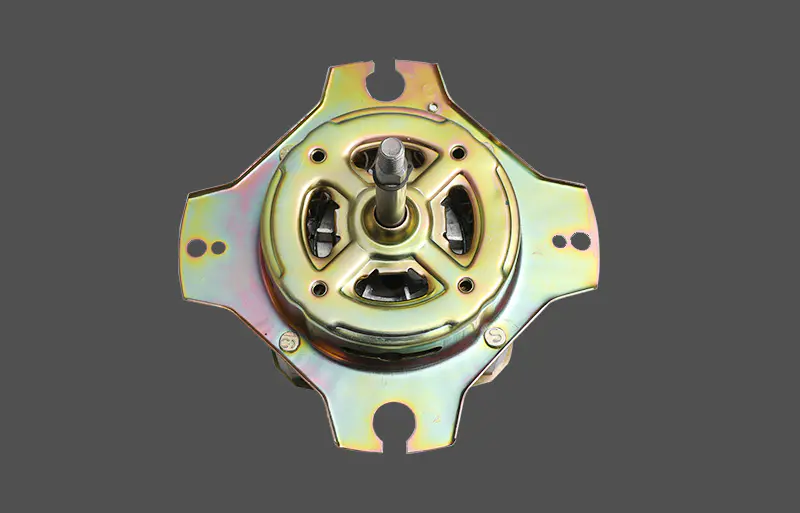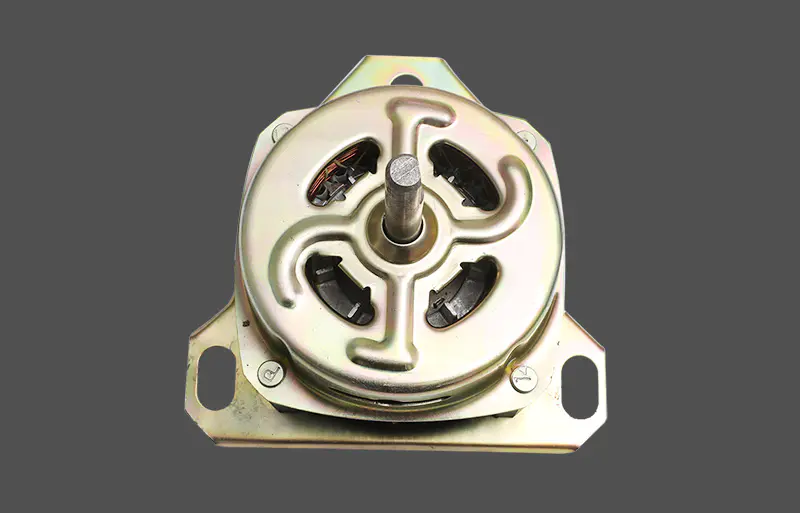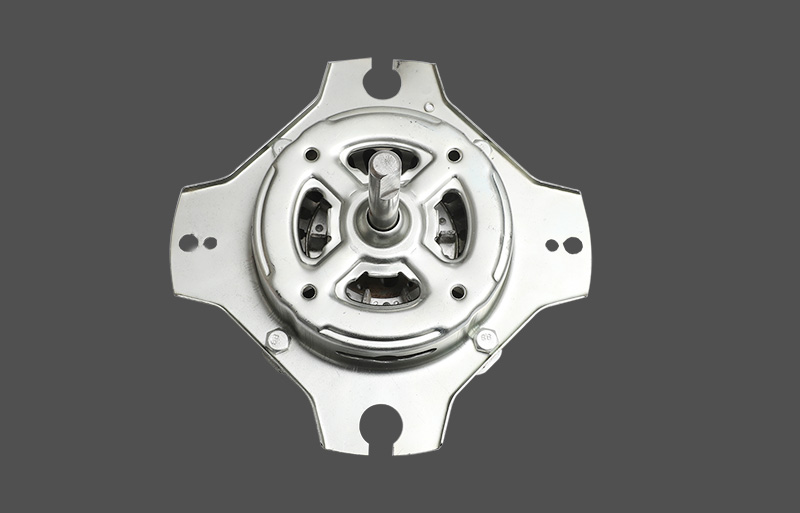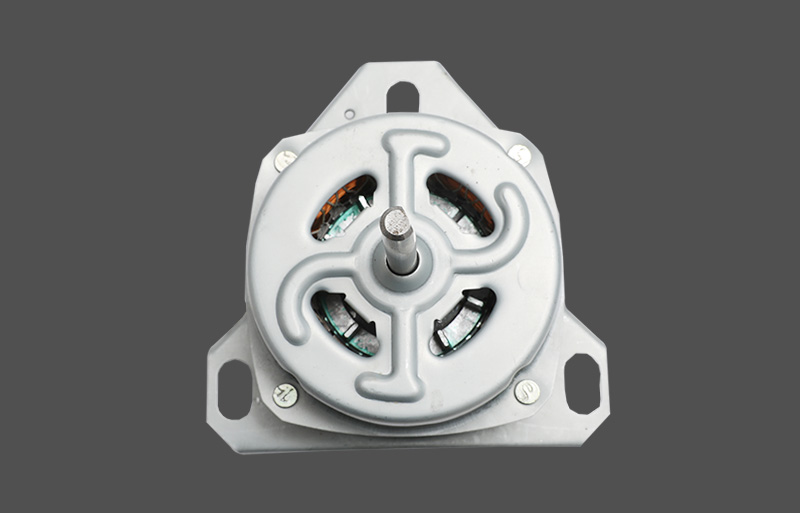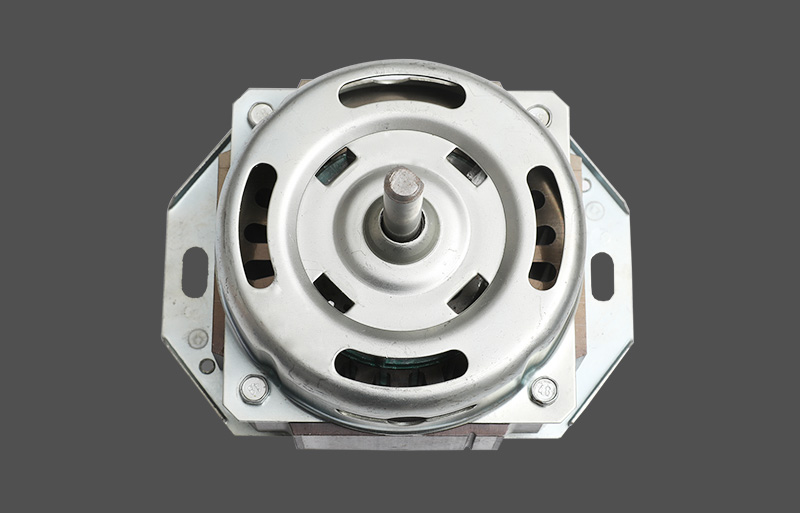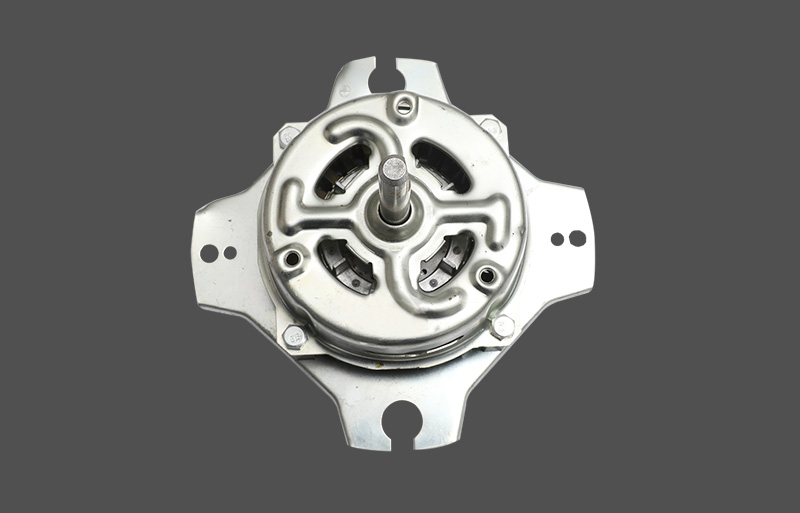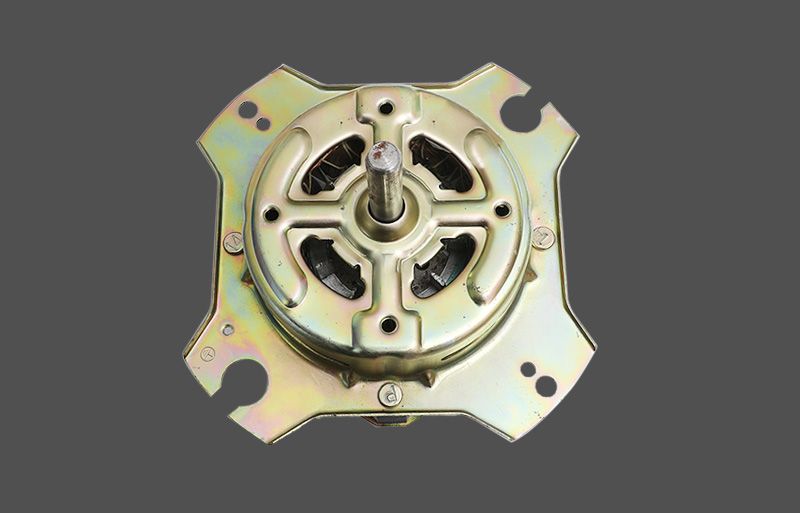As a key component that drives the high-speed rotation of the spin-drying drum, the performance of the washing machine spin-drying motor is directly related to the spin-drying efficiency and service life of the washing machine. Changes in load conditions have a significant impact on the operating characteristics and stability of the spin-drying motor.
Performance under no-load state
When the spin-drying motor is in no-load state, the load is extremely low, and the motor only needs to overcome its own mechanical friction and air resistance to operate. At this time, the motor speed can quickly reach the rated speed, the current consumption is low, and the operating efficiency is high.
Under no-load state, the motor temperature rise is low, the mechanical wear is minimal, and it is suitable for testing the performance of the motor itself, such as winding integrity and control system response. The vibration and noise performance of the motor are relatively stable, which helps to determine whether there are abnormalities in the mechanical structure.
Performance under light load state
Light load usually refers to the case where a small amount of wet clothes is placed in the washing machine or the clothes are evenly distributed, and the motor load is moderate. At this time, the motor current increases, but it remains within the rated range and the speed is stable.
Under light load state, the motor needs to provide sufficient torque to overcome the resistance of the clothes and the inertia of the barrel, and the starting performance and acceleration performance become the focus of attention. The motor control system needs to accurately adjust the current and speed to ensure smooth startup and avoid mechanical shock.
Under light load conditions, the motor temperature rises slightly, but is still within a safe range. The motor operating vibration and noise increase, mainly from the friction between the clothes and the drum wall and the centrifugal force.
Performance under medium load conditions
Medium load corresponds to a normal amount of wet clothes in the washing machine, and the load is close to the design condition. The motor operating current is close to the rated current, the speed remains stable, and the torque output is sufficient.
Medium load conditions are the main operating conditions for long-term operation of the spin dryer motor. The motor control system adjusts the current and speed in real time through feedback signals to ensure that the spin dryer reaches the optimal speed for effective dehydration.
At this time, the motor temperature rise increases significantly and the heat dissipation requirements increase. The bearing and motor structure are subject to greater mechanical stress, and the design and material quality play a key role in the life of the motor.
Performance under high load conditions
High load conditions often occur when the washing machine is loaded with excessive clothes or the clothes are seriously unbalanced, and the motor load increases significantly. The current significantly exceeds the rated value, the speed may drop, and the operating stability is challenged.
Under high load conditions, the motor is difficult to start, and the torque demand increases significantly. The control system needs to adopt a more powerful starting strategy, such as increasing the current limit time or enabling variable frequency speed regulation.
The motor heats up more and the overheat protection may be activated frequently, affecting the continuous working time. The stress of the bearings and windings increases, and the mechanical vibration and noise increase significantly, which can easily lead to early failures.
The impact of load imbalance on motor performance
Load imbalance is a common problem in the washing machine spin drying process, especially when the clothes are unevenly distributed. Load imbalance causes violent vibration when the spin dryer rotates, and the motor is subjected to periodic impact loads.
In this case, the motor control system needs to detect the vibration signal in real time and start automatic balancing or load reduction protection measures to prevent motor damage. Load imbalance will cause motor current fluctuations, and the controller needs to adjust the output to maintain a stable speed.
The motor bearings and mechanical connection parts are prone to fatigue damage due to increased vibration, shortening the life of the equipment. Excessive vibration will also affect the user experience, and the load distribution problem needs to be solved in time.
Performance under extreme load conditions
Extreme load refers to the operation of the motor under abnormal load such as stalling, overload or mechanical jamming. At this time, the motor current increases sharply, the speed decreases or even stops rotating.
Extreme load conditions cause great damage to the motor, which can easily cause winding overheating and burning, bearing damage and motor structure deformation. The protection function of the control system must respond in time to cut off the power supply to avoid accidents.
Diagnosing extreme load faults requires the use of multiple means such as current detection, temperature monitoring and vibration analysis to ensure timely and safe maintenance.





